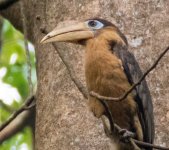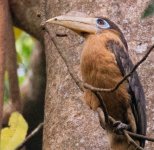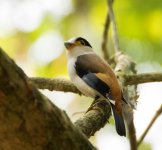The Panny GH stuff is amazing for the features/options for the video, ....
The reality of it is this is the best feature MFT really has over DSLRs but it comes at a heavy price you pay for quality of photographs you get from a MFT. Before anyone says "my MFT takes great pictures" I will say so can a modern smart phone, even with a scope..and for distance it will be a lot easier to use. The size of the smaller MFT bodies really is not all that small after a lens is attached and going with a smaller body can hurt hand held use by making it to unbalanced with a long lens, which is why most super zoom point and shoots have much larger bodies. Price on good MFT is horribly expensive, on the Olympus E-M1 body price you can walk out with a 70D and two great lens included.
Sorry, but have to disagree with almost everything you claim here. First, the main advantage of MFT over DSLRs is the weight of an equivalent magnification camera/lens combination, which for birding can be an enormous difference. Second, the price of a "good" MFT camera is around $600 for a G6; the E-M1 is a premium professional class camera with advantages such as weather sealing, the image quality differences between it and a G6 are fairly minimal. Finally, if you think carrying around a scope and tripod and digiscoping is as convenient for photographing birds as carrying a lightweight handheld camera you are in a distinct minority. Moreover, the keeper rate for digiscoping is notoriously low to say nothing of the fact you will miss a lot of bird photos if you are constrained by a tripod.








